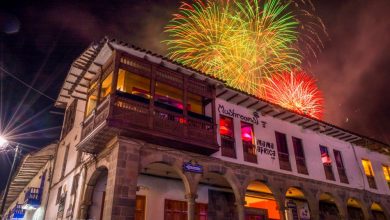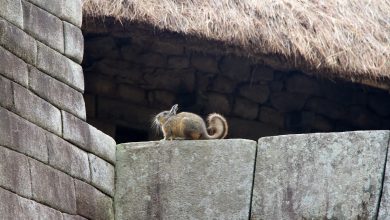Seeking Machu Picchu
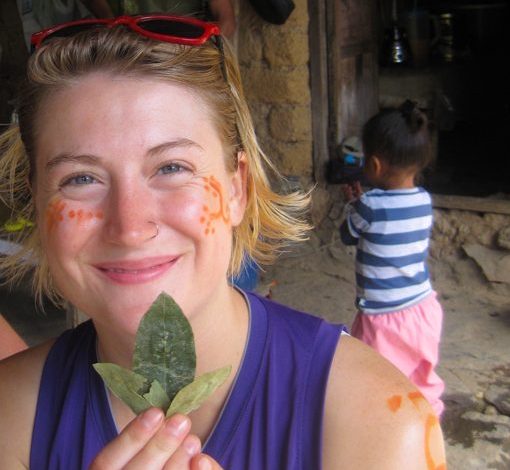
We awkwardly huddled together in Cuzco’s brisk morning air, the way you’d expect a young group of European and American strangers to gather as they anticipate a four-day intimate journey. Stiff, but excited, we were off to climb Machu Picchu—it’s been on our all of our bucket lists for one reason or another. But what surprises me is the general lack of knowledge about the site, Peruvian history and religion among our group.
I find it hilarious that most of us flew halfway around the world to see a site we knew nothing about. I was no exception myself. Thankfully, we had two tour guides, Juan Carlos and Juanito, who were not only willing to hold our hands on exposed cliff ledges, but indulged us in their carefully crafted geographic and cultural commentary while we hiked.
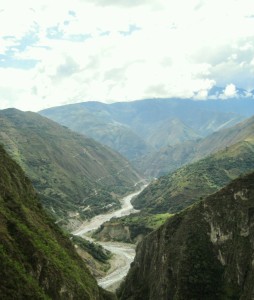
The ups and downs of the Inca Jungle trail were punctuated by Juan Carlos’ lectures. While they were mainly to let the group rest and chat, my academic obsession for facts coupled with a vague familiarity with the topics led me to pepper him with questions. My inquiries were often greeted with confusion, and I soon realized that he wasn’t sharing a causal commentary, but rather a rehearsed script. Each stop had a premeditated theme full of interesting facts that was executed with precision. However, I soon moved to the back in order to bounce my curiosity off Juanito. He told me that he was working to learn Peruvian history and culture from Juan Carlos. These local tour guides have created a historical oral tradition that they pass along the trail from one guide to another. Unable to hop online to fact-check or research more, I felt a new sense of limitation. I was keenly aware of my dependence on their knowledge and interpretation of history. I had never learned like this before and my discomfort was eye opening.
Lingering near the back, I watched Juanito offer three dried cocoa leaves to Pachama, mother earth, to show gratitude. Before placing them in the sacred hollow of the cliff ledge he bowed, leaves spread in hand, towards the mountain asking for our safe journey. As I self-consciously followed his motions, I was taken by the majesty of a mountain deity. Gods for me had always resembled people, but the scale of this snowcapped beast cast a new reverence for the natural world in me. Juanito explained that each leaf represented the three levels of life: 1) The Condor symbolized the heavens 2) the Jaguar symbolized the human realm and 3) the snake the inner earth. I immediately saw similarities to Christian cosmology, but when I asked Juanito if the snake represented hell, he firmly told me that was not the case. Making connections to my culture often got in the way of my ability to understand these stories.
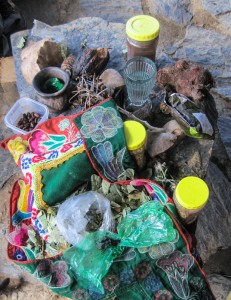
We continued to talk more about mythology as he proudly pointed out various fruits and birds. I was curious about Ayar creation myth and as I recounted the first brothers coming from the cave and planting food Juanito grinned in agreement. I was excited to learn about the sisters, pottery and the rise of the Incas. However, my expectations led to confusion again. Juanito explained that long ago the land was all one, a sort of Pangaea, but eventually a flood came that lasted 40 days and nights ripping the earth apart. He continued, saying Adam and Eve were the first people on earth, but the Ayar siblings were the first family as well. I remember interrupting him as he spoke about the flood. “Juanito, I only want to hear Incan mythology not Catholic” I said. I realized that he was sharing the fluidity of his mythology. I was the one who couldn’t fully conceive of how these two stories wove together. I had never dealt with living myth and the nuisance of oral storytelling. I expected tidy accounts like I experienced in books, but Juanito paused whenever I tried to pin a single explanation down.

Our conversations were fragmented for many reasons. He shared stories with a deep sense of respect. He had learned them by listening to his grandfather who only spoke Quechua. Despite my enthusiasm, he seemed embarrassed by this. I learned from another woman in our group that he was teased in school for only knowing his indigenous language. As my mouth stumbled over Quechua words that sounded more like phrases, I became overwhelmed with the complexity of his world. I’d quickly forget the meaning of words, asking to hear them again and again. I wanted to show him I understood his words and stories by constantly relating things to my culture, but it was difficult for me to really comprehend things; I lacked context. It was likely even more frustrating for him to translate personal, complex beliefs in his soft, broken English. I eventually learned to walk quietly and wait for him to point out things along the trail. He always seemed perplex by my interest in old stories and my confidence that they were all mythologies.
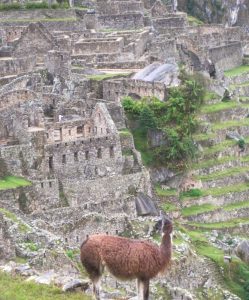
On the final day, we made our long awaited and rain-drenched assent to Machu Picchu. Juan Carlos met us in suit-and-tie for our official tour. As the stone walls came into view, the scene truly took my breath away. Although I didn’t know much about this place, getting here was massively important to me. Juan Carlos smiled at the fog lifting off the towering mountains and expressed that even though he has been over 100 times it is still magical to him. His voice in this moment resonated with sincerity and pride. Sharing his excitement was intoxicating. However, as we listened I became aware of the way in which the site’s history was told for a foreign, white audience. I was shocked when Juan Carlos said that Machu Picchu was “discovered” by Hiram Bingham, a European, in 1911. It was as if the place didn’t exist until it had be mapped and accounted for by Europeans. It appeared that most tour groups only cared for a brief account of “their” interaction with the site. I felt frustrated by this historically sanitized version and my contribution in encouraging these kinds of narratives. As I brought up this issue with Juanito, he expressed how awkward he felt discussing Peruvian history with Spanish tourists because he felt he couldn’t talk about the cruelty and exploitation. I am continually impressed by these tour guides interaction with foreign cultures and perspective. The affects of learning and sharing an oral history tradition that is catered an ignorant, foreign audience is very challenging. Hiking the Inca Trail brought to life the cultural conflicts of how we share and shape history and myth.


